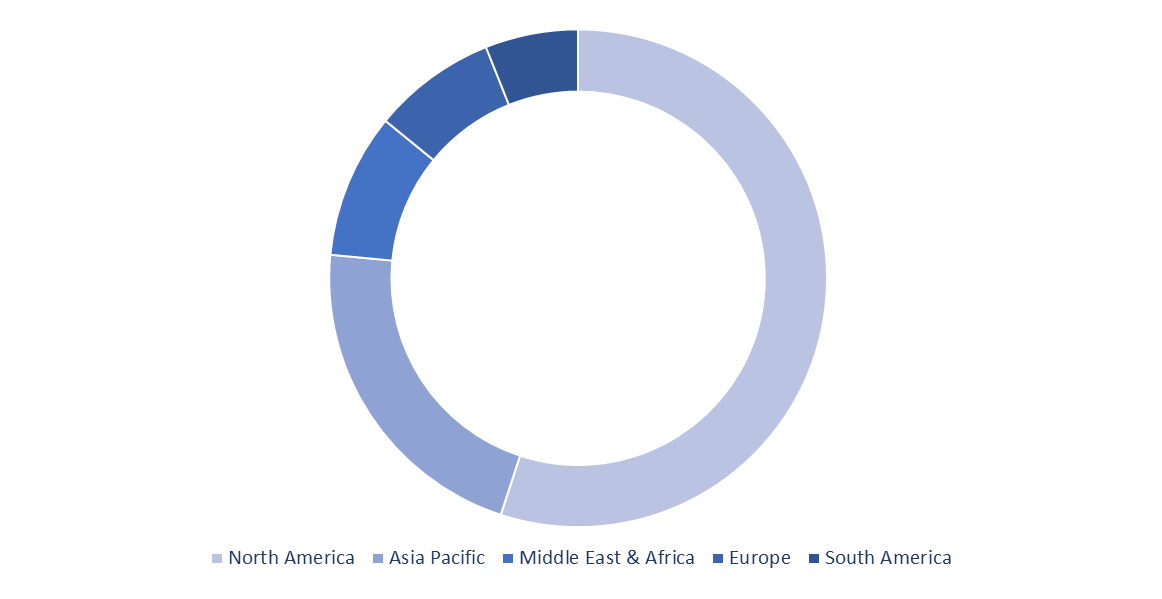The External Ventricular Drain Market was worth US$ 4.8 Billion in 2019 and is expected to grow at a CAGR of 8.0 % through 2030. Rising occurrences of neurological disorders and rising number of road accidents which turns into critical traumatic brain injuries are primary factors driving the market growth.
Additionally, extensive research activities and significant initiatives for product innovations are some of the other factors anticipated to fuel the market growth in coming years. As indicated by the WHO, neurovascular stroke is the second most common reason for death and the third most common reason for disability around the globe and roughly 60 to 80 percent of all strokes are ischemic. This happens because of obstructed veins which restricts the blood flexibly to the brain or when a debilitated vein blasts and seeps into the encompassing brain.
Since, the past few years, the occurrence pace of strokes significantly in developing nations has almost doubled. For example, India has a high prevalence pace of ischemic stroke and is one of the main causes of death. As per a study conducted by All India Institute of Medical Sciences (AIIMS) 2016, roughly 1.8 million Indians suffer from cerebrovascular stroke each year. Moreover, around 1.1 million individuals in Europe suffer from ischemic stroke each year. Accordingly, a high rate of cerebrovascular problems may prompt intraventricular bleeding (hemorrhage), which results in demand for utilization of ventricular drain sets to eliminate the abundance cerebrospinal fluid. This is expected to positively influence the market growth.
Additionally, the expanding frequency of cranial trauma and injuries over the world is a key driver of the market for external ventricular drains. Sports injuries and road accidents are the most common reasons for head injury, and cranial injuries. This outcomes in hospitalization and permanent handicap for thousands of individuals each year. Raised Intracranial Pressure (ICP) after a head injury is considered to have an adverse impact with a death pace of around 20%. Hence, continuous monitoring of intracranial pressure is vital to observe the movement of brain injury. According to the WHO, vehicle injuries are anticipated to be the ninth driving reason for death around the world. Similarly, as per the Association for Safe International Road Travel 2018 report, around 20-50 million individuals are harmed or incapacitated each year attributable to road injuries. In United States falls (52%) and road accidents (20%) are major driving factors for all traumatic-related hospitalizations. This will eventually surge the demand for external ventricular drain for the treatment.

External Ventricular Drain Market Value Share Analysis, by Geography (2022)
The report titled “External Ventricular Drain Market- Global Market Share, Trends, Analysis and Forecasts, 2023-2032” wherein 2021 is historic period, 2022 is the base year, and 2023 to 2032 is forecast period. Additionally, the study takes into consideration the competitive landscape, wherein the report would provide company overview and market outlook for leading players in the global external Ventricular drain market. Furthermore, the report would reflect the key developments, global & regional sales network, business strategies, research & development activities, employee strength, and key executive, for all the major players operating in the market.
The global external ventricular drain market is segmented on the basis of application and geography. Based application, the global market can be segmented into Intracerebral Hemorrhage, Subarachnoid Hemorrhage, Traumatic Brain Injury, and Other Non-traumatic Hydrocephalus Conditions. Based on geography, the global external ventricular drain market is segmented into North America, Europe, Asia Pacific, Middle East & Africa, and South America. North America is sub-segmented into the United States, Canada and Rest of North America. Europe is sub-segmented into Germany, United Kingdom, Belgium, Spain, and Rest of Europe. Asia Pacific is sub-segmented into China, Japan, India, Australia, and Rest of Asia Pacific. Middle East & Africa is sub-segmented into Saudi Arabia, the UAE, and Rest of Middle East & Africa. South America is sub-segmented into Brazil and Rest of South America.
The research provides in-depth analysis of prominent players holding majority share of the global market with a focus on all operating business segment and would identify the segment of the company focusing on external Ventricular drain. Further, market share of prominent companies in the global external ventricular drain market would also be estimated.
The study takes into consideration the key competitive information such as business strategy, product portfolio, key development, swot analysis, and research and development focus of all the external ventricular drain companies. The global external ventricular drain market study would take into consideration the participants engaged throughout the supply chain and value chain of the market, along with their contribution. Product portfolio would focus on all the products under the external ventricular drain business segment of the company. Similarly, the recent development section would focus on the latest developments of company such as strategic alliances and partnerships, merger and acquisition, new product launched and geographic expansion in the global external ventricular drain market.
Some of the prominent player involved in global external ventricular drain market include Fuji Systems, Spiegelberg GmbH & Co. KG, B. Braun Melsungen AG, Medtronic, Möller Medical GmbH, Sophysa, Integra LifeSciences, and Dispomedica GmbH.
Segmentation:
By Application
By Geography
The base year considered in External Ventricular Drain market report is 2022
Key External Ventricular Drain market players are Fuji Systems, Spiegelberg GmbH & Co. KG, B. Braun Melsungen AG, Medtronic, Möller Medical GmbH, Sophysa, Integra LifeSciences, and Dispomedica GmbH.
Based on applicaltions, the External Ventricular Drain market is segmented into Intracerebral Hemorrhage, Subarachnoid Hemorrhage, Traumatic Brain Injury and Other Non-traumatic Hydrocephalus Conditions.
Rising occurrences of neurological disorders and rising number of road accidents which turns into critical traumatic brain injuries are primary factors driving the market growth.
Copyright © 2025 Same Page Management Consulting Pvt. Ltd. (insightSLICE) | All Rights Reserved
